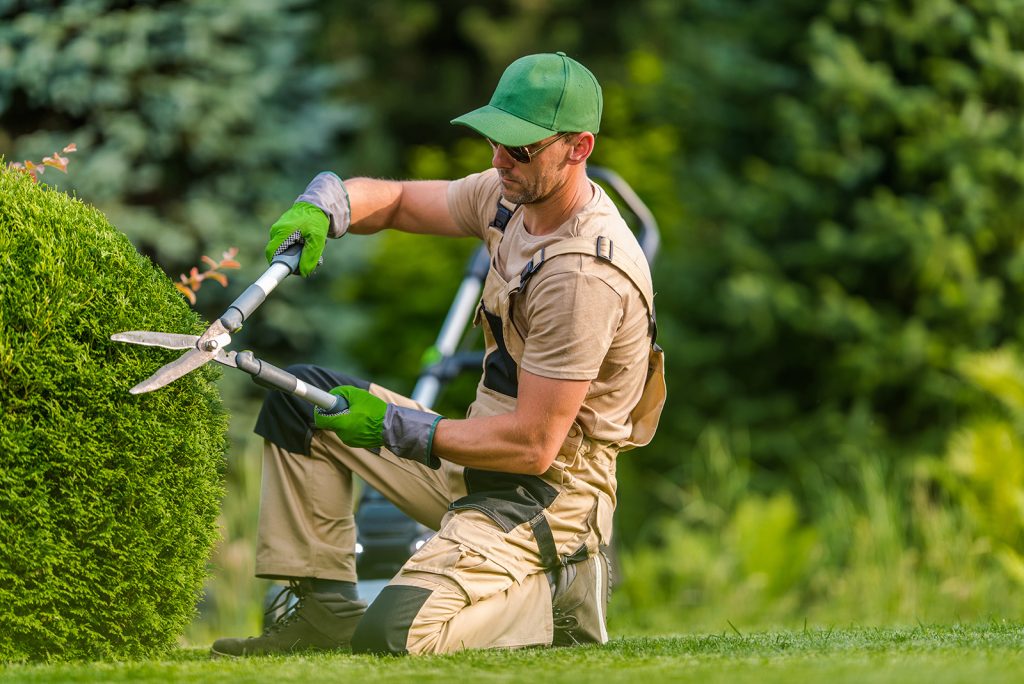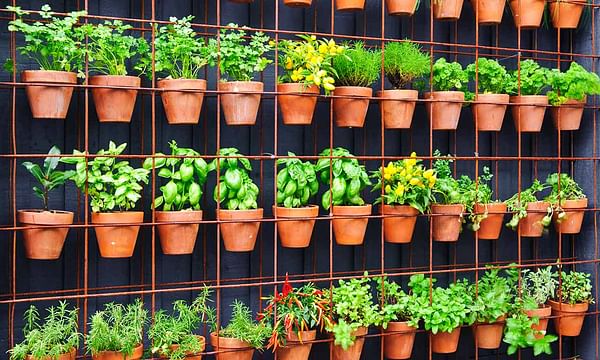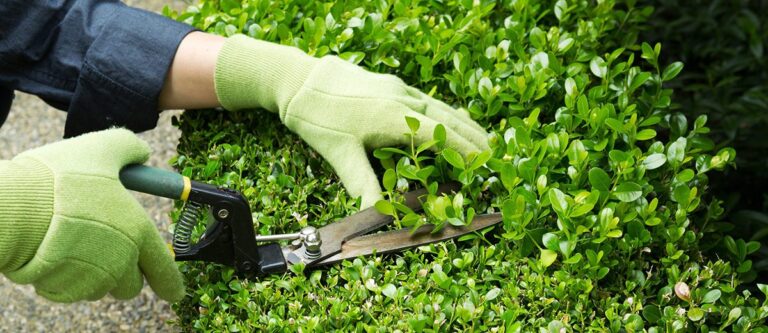The art of gardening, once largely dependent on manual labor and traditional tools, is being revolutionized by an array of innovative technologies. Garden maintenance innovations are transforming how we cultivate, nurture, and enjoy our green spaces, making them more efficient, sustainable, and enjoyable. From intelligent irrigation systems that conserve water to robotic lawnmowers that free up our time, these advancements are not just about convenience; they’re about fostering healthier plants, reducing environmental impact, and creating truly smart landscapes. This comprehensive article delves deep into the cutting-edge of garden technology, exploring the functionalities, dissecting the benefits, and envisioning the future of these must-have tools that are redefining modern garden care. Prepare to discover how these breakthroughs can help you achieve a thriving, beautiful garden with less effort and more intelligence.
Smart Lawn Care

Maintaining a pristine lawn has traditionally been a time-consuming chore. Innovative smart tools are automating this process, delivering professional results with minimal human intervention.
A. Robotic Lawn Mowers
Robotic lawn mowers are perhaps the most prominent innovation in smart lawn care. These autonomous machines navigate your lawn, cutting grass on a schedule, and recharging themselves as needed.
- Navigation and Mapping: Modern robotic mowers use advanced GPS, boundary wires (physical or virtual), and obstacle detection sensors to map your lawn and ensure comprehensive coverage. They can efficiently navigate around trees, flower beds, and even trampolines, ensuring every blade of grass is precisely cut. Some high-end models offer “no-go” zones or multi-zone management for complex garden layouts.
- Scheduling and Customization: Users can schedule mowing times via a smartphone app, setting the robot to work at night, early morning, or while away, ensuring a consistently manicured lawn without disrupting daily activities. You can often adjust cutting height and even define specific areas for more frequent trimming.
- Mulching Benefits: Most robotic mowers are designed to mulch the grass clippings into fine particles, returning nutrients to the soil. This eliminates the need for bagging and promotes a healthier, greener lawn, acting as a natural fertilizer.
- Security and Safety Features: Equipped with lift sensors (to stop blades if lifted), tilt sensors, and often PIN codes or GPS tracking for theft prevention, these mowers are designed for safe and secure operation. Some even have rain sensors to return to their charging station during inclement weather.
- Integration with Smart Home Systems: Many models can integrate with broader smart home ecosystems, allowing for voice control or inclusion in automated garden routines.
B. Smart Sprinkler Systems
Gone are the days of rigid watering schedules that ignore actual weather conditions. Smart sprinkler systems optimize water usage based on real-time data, promoting healthier plants and significant water savings.
- Weather-Based Watering: These systems connect to local weather forecasts and historical data (via Wi-Fi) to automatically adjust watering schedules. If rain is expected, it will skip a cycle. If it’s unusually hot and dry, it might increase watering duration, ensuring your plants receive just the right amount of water.
- Soil Moisture Sensors: For even greater precision, soil moisture sensors can be installed in different zones of your garden. The sprinkler system then waters only when the soil moisture drops below a pre-set threshold, preventing overwatering or underwatering.
- Zonal Control and Customization: Smart sprinkler controllers allow for independent control of multiple watering zones, each with its own customized schedule, duration, and water requirements, catering to different plant types (e.g., thirsty flowers vs. drought-tolerant shrubs).
- Smartphone App Control: Manage your entire irrigation system from anywhere via a smartphone app, allowing you to start, stop, pause, or adjust schedules on the fly. You can also view water usage reports and receive alerts.
- Leak Detection and Alerts: Some advanced systems can detect unusual water flow patterns, potentially alerting you to leaks or broken pipes, preventing water waste and property damage.
C. Smart Soil Sensors
Beyond just moisture, dedicated smart soil sensors provide granular data about your soil’s health, offering invaluable insights for optimal plant growth.
- Nutrient Levels and pH: These sensors can measure key soil parameters like nitrogen, phosphorus, and potassium (NPK) levels, as well as soil pH. This data, sent to a companion app, helps you understand nutrient deficiencies or imbalances, guiding your fertilization decisions.
- Temperature and Light: Many sensors also monitor soil temperature (crucial for seed germination and root health) and ambient light levels, ensuring your plants receive adequate sunlight.
- Personalized Recommendations: Based on the data, the app often provides personalized recommendations for fertilizing, adjusting pH, or repositioning plants for optimal light exposure, taking the guesswork out of plant care.
Integrated Garden Maintenance
Modern garden care involves more than just cutting grass and watering. Innovation extends to pest control, pruning, and comprehensive monitoring.
A. Robotic Weeders
While still emerging, robotic weeders are an exciting prospect for automated, chemical-free weed management.
- Identification and Removal: These robots use computer vision and AI to identify weeds (differentiating them from desired plants) and then precisely remove them using mechanical tools or targeted bursts of heat, minimizing the need for herbicides.
- Targeted Approach: By targeting individual weeds, they significantly reduce the overall use of chemicals, contributing to a healthier garden ecosystem and safer produce.
B. Electric and Battery-Powered Tools
The shift from gas-powered to electric and battery-powered garden tools (e.g., leaf blowers, string trimmers, hedge trimmers, chainsaws) represents a significant environmental and user-experience improvement.
- Reduced Emissions and Noise: Electric tools produce zero direct emissions during operation, making them environmentally friendlier. They are also significantly quieter than gas-powered equivalents, reducing noise pollution for both the user and neighbors.
- Lower Maintenance: Battery-powered tools eliminate the need for fuel mixing, oil changes, spark plug replacements, and carburetor cleaning, resulting in lower maintenance requirements and easier upkeep.
- Convenience: Simply charge the battery and go. Cordless designs offer unparalleled freedom of movement, while corded electric tools provide consistent power.
- Battery Technology: Advances in lithium-ion battery technology have increased run times, power output, and reduced charging times, making these tools viable alternatives for even demanding tasks. Many brands offer a single battery platform that powers a range of different tools.
C. Smart Sheds and Tool Management
While not a direct tool, smart features for sheds and tool management can significantly improve efficiency.
- Automated Inventory: Future sheds might incorporate RFID or barcode scanning to automatically track tools, alerting you if something is missing or needs maintenance.
- Environmental Monitoring: Sensors could monitor temperature and humidity within the shed, protecting tools from rust or damage due to extreme conditions.
- Security Features: Smart locks and integrated alarms can enhance the security of your valuable garden equipment.
Vertical and Hydroponic Gardening Systems

For urban dwellers or those with limited space, innovative systems allow for efficient plant cultivation indoors or in compact outdoor areas.
A. Smart Indoor Gardens
Smart indoor gardens (often countertop units) use hydroponics or aeroponics to grow herbs, vegetables, and flowers year-round, regardless of climate.
- Automated Lighting and Watering: These systems feature integrated LED grow lights with automated timers to provide optimal light spectrum and duration. They also have self-watering systems that deliver nutrients directly to the plant roots, eliminating guesswork.
- Nutrient Management and Monitoring: Sensors monitor water levels and nutrient concentrations, alerting you when it’s time to refill or add nutrients. Some advanced systems can even adjust nutrient levels automatically.
- Compact Design: Designed for small spaces, they allow fresh produce to be grown in kitchens, apartments, or offices, offering unparalleled convenience.
- App Connectivity: Control schedules, monitor plant growth, and receive personalized care tips via a smartphone app.
B. Vertical Gardening Systems
Vertical gardening systems allow you to grow plants upwards, maximizing yield in small footprints.
- Modular Design: These systems often feature modular, stackable planters or wall-mounted pockets, making them adaptable to balconies, patios, or even interior walls.
- Integrated Irrigation: Many vertical systems incorporate drip irrigation or hydroponic systems to efficiently deliver water and nutrients to each plant in the vertical array.
- Smart Features: Some advanced vertical farms integrate smart lighting, automated watering, and environmental sensors for optimized growth in a compact, multi-tiered setup.
Robotics and AI in Advanced Landscaping
Beyond individual tools, the convergence of robotics and artificial intelligence holds immense potential for the future of large-scale garden and landscape maintenance.
A. AI-Powered Diagnostics
- Pest and Disease Detection: AI-powered cameras (mounted on drones or dedicated ground robots) could identify early signs of plant diseases or pest infestations by analyzing visual cues, alerting gardeners to issues before they spread.
- Nutrient Deficiency Identification: By analyzing leaf color and growth patterns, AI could detect nutrient deficiencies and provide precise recommendations for fertilization.
- Automated Pruning Guidance: AI could analyze plant growth and suggest optimal pruning points for health and aesthetics, potentially even guiding robotic pruners in the future.
B. Autonomous Garden Mapping and Analysis
- Drone-Based Mapping: Drones equipped with multispectral cameras can map large gardens or commercial landscapes, providing detailed data on plant health, soil conditions, and water saturation across vast areas.
- Precision Application: This data can then be used for precision application of water, fertilizers, or pesticides by automated ground vehicles, minimizing waste and environmental impact.
C. Future Robotic Assistants
- Robotic Planters: Imagine small, autonomous robots that can precisely plant seeds or seedlings in optimal locations based on soil conditions and sunlight.
- Automated Harvesters: For larger gardens or small farms, specialized robots could identify and harvest ripe produce, streamlining the collection process.
- Integrated Garden Management Systems: The ultimate vision is a fully integrated system where various robots (mowers, weeders, planters) communicate with smart sensors and a central AI, autonomously managing the entire garden ecosystem.
Software and Connectivity
The power of these innovations is unlocked through intuitive software, robust connectivity, and integrated ecosystems.
A. Garden Management Apps
- Centralized Control: A single smartphone app often acts as the command center for all your smart garden devices, allowing you to monitor status, adjust settings, and schedule tasks from anywhere.
- Plant Databases and Care Guides: Many apps integrate extensive plant databases with care instructions, troubleshooting guides, and reminders for watering, fertilizing, or pruning specific plants.
- Data Visualization: Visualize data from soil sensors, weather stations, and watering logs to understand your garden’s health and optimize care routines over time.
B. Wi-Fi and Bluetooth Connectivity
- Reliable Connection: Robust Wi-Fi and Bluetooth connectivity ensure seamless communication between your smart garden devices and your home network, allowing for remote control and data transfer.
- Mesh Networks: For larger gardens, a mesh Wi-Fi system can extend coverage, ensuring all devices remain connected.
C. Voice Assistants and Smart Home Integration
- Convenient Commands: Integrate your smart garden devices with voice assistants (e.g., Google Assistant, Amazon Alexa) to control watering, check mower status, or query soil conditions with simple voice commands.
- Automated Routines: Create smart home routines that combine garden tasks with other home automation. For example, “Good Morning Garden” could start the sprinkler, check the robotic mower’s battery, and play ambient nature sounds.
Purchasing Considerations and Sustainability
When considering garden maintenance innovations, several factors should guide your purchasing decisions to ensure they align with your needs and promote sustainability.
A. Key Purchasing Factors
- Garden Size and Layout: The size and complexity of your garden will dictate the appropriate scale of robotic mowers, sprinkler systems, and other tools.
- Specific Needs: Identify your pain points. Is it watering? Weeding? Mowing? Choose innovations that directly address your biggest challenges.
- Budget: These innovations range from affordable smart sensors to high-end robotic mowers. Set a realistic budget and prioritize.
- Connectivity and Ecosystem: If you plan to build a smart garden ecosystem, ensure new devices are compatible with your existing smart home platform or a unified standard like Matter (if applicable).
- Durability and Weather Resistance: Outdoor tools must be built to withstand the elements. Look for weatherproof and durable designs with good warranties.
- User-Friendliness: Ensure the setup, programming, and app interfaces are intuitive and easy to use.
- Maintenance Requirements: Understand the ongoing maintenance needs of robotic devices (e.g., blade replacement for mowers, sensor cleaning).
B. Sustainability and Environmental Impact
- Water Conservation: Smart irrigation systems are key to reducing water waste. Look for EPA WaterSense certified products.
- Reduced Emissions: Opting for electric and battery-powered tools significantly reduces your carbon footprint compared to gas-powered alternatives.
- Natural Pest Control: Robotic weeders and smart monitoring reduce the reliance on chemical pesticides and herbicides.
- Mulching Benefits: Robotic mowers that mulch clippings return nutrients to the soil, reducing the need for chemical fertilizers.
Conclusion
The world of garden maintenance innovations is flourishing, offering a vibrant array of intelligent tools that are transforming our relationship with nature. From the autonomous precision of robotic lawnmowers to the water-saving intelligence of smart irrigation, and the deep insights provided by soil sensors, these advancements are making gardening more accessible, efficient, and environmentally friendly.
By embracing these breakthroughs, you’re not just investing in convenience; you’re cultivating a healthier, more beautiful green space while conserving resources and minimizing effort. The synergy of smart devices, intuitive software, and a growing understanding of plant science is paving the way for a future where every garden is a thriving, intelligent ecosystem. So, step into the garden of tomorrow, today, and let innovation help your green dreams blossom.










